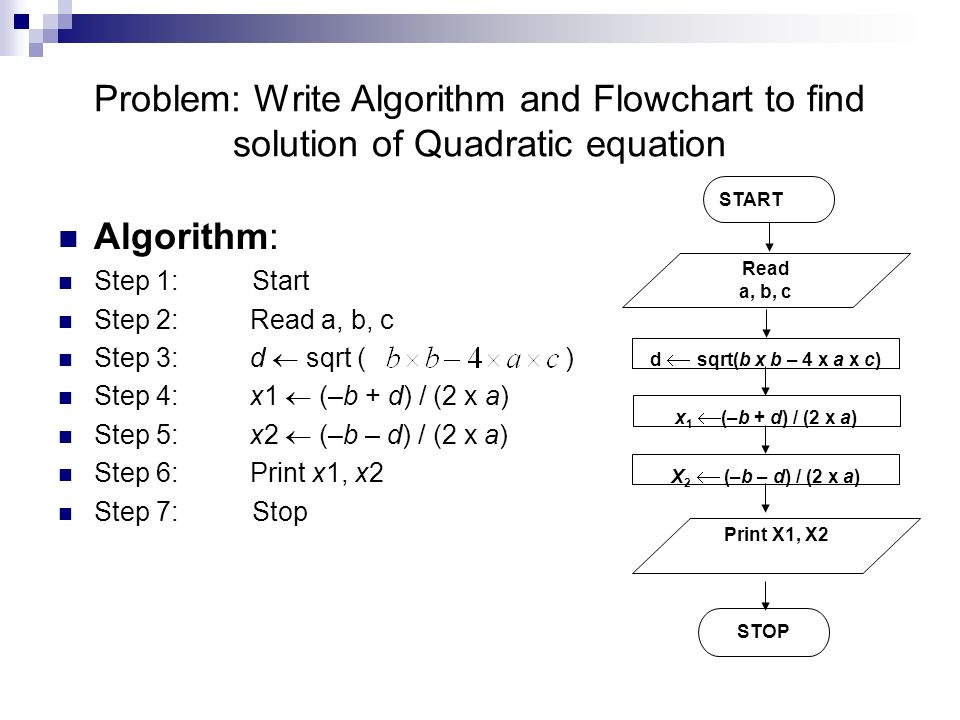Welcome back readers, today I’ll be discussing the difference between flowchart and algorithm. But before getting started, I want to discuss a bit about both the topics.
Flowchart
A flowchart is a diagram which represents different steps that can help in solving a problem. It is a diagram which is made step by step using different shapes and sizes of arrows which show their connection.
It was first introduced by Frank Gilbert in 1921. The chart consists of some mathematical shapes like arrows, square, rhombus or diamond, hexagon, parallelogram, etc.
Types of flowchart:
- Document flowchart
- Diagram flowchart
- System flowchart
- Data flowchart
It is a flow of information that illustrates a solution model to a particular program. It is the pictorial form of representation of a process and algorithm is done using a step by step process.
Algorithm
An algorithm is a step by step process which is used in solving mathematical or sometimes computational problems. The word ‘algorithm’ came from al-Khwarizmi. He was a Persian astronomer, geographer, mathematician and scholar.
Other ways of classification for algorithms is through the means of recursion, serial, parallel or distributed and they can be also viewed as controlled logical deduction.
An algorithm can be expressed in any language including natural language, programming language, pseudocode etc. They can be converted into flowcharts.

Flowchart vs Algorithm – Difference between Flowchart and Algorithm
| Flowchart | Algorithm |
| Block by block information diagram representing the data flow. | Step by step instruction representing the process of any solution. |
| Easy to understand by any person. | Bit difficult for the layman. |
| It uses symbols for processes and I/O. | No symbols are used, completely in text. |
| Have some rule to create. | No hard and fast rule. |
| Difficult to debug errors. | Easy to debug errors. |
| It is easy to make flowchart. | It is difficult to write algorithm as compared to flowchart. |
Now let’s discuss the advantages and disadvantages of both.
Advantages of Flowchart
- It is an easy and efficient way to analyze problem using a flowchart.
- It is easy in converting the flowchart into code as the logic can be understood easily.
- It is an efficient way of communicating and noobs can understand easily.
- It is easy in drawing a flowchart if you know the process.
Disadvantages of Flowchart
- Drawing a flowchart can be very time-consuming.
- Programs are not easier in debugging.
- If the flowchart is complex, writing code can be very confusing.
- Even the drawing of the flowchart will be complicated if the logic is complicated.
Advantages of Algorithm
- It makes the representation of a solution to a problem easy, which makes easier in understanding.
- It can be easily understood by a person without even having the knowledge of programming.
- It follows a definite procedure.
Disadvantages of Algorithm
- It takes very long in writing an algorithm.
- It is not a computer program, neither it helps in reducing the difficulties while writing a code.
If you have any doubts related to flowchart vs algorithm, then feel free to ask it in the comment section below.
The post Difference between Flowchart and Algorithm appeared first on The Crazy Programmer.
from The Crazy Programmer https://www.thecrazyprogrammer.com/2018/04/difference-between-flowchart-and-algorithm.html
Comments
Post a Comment